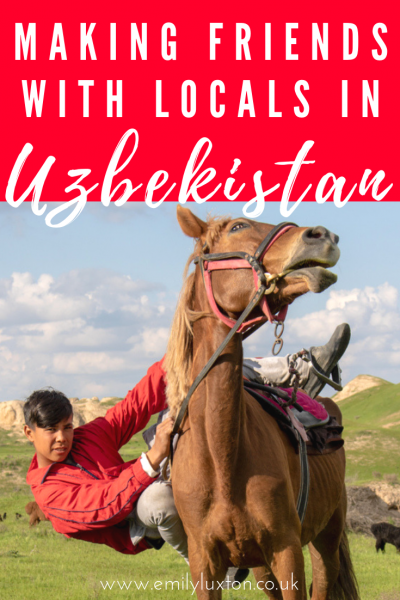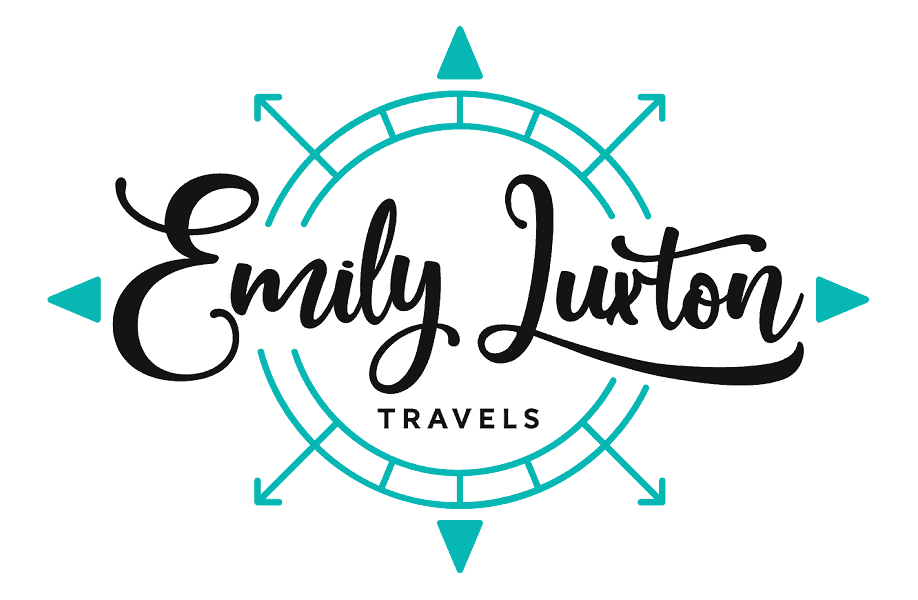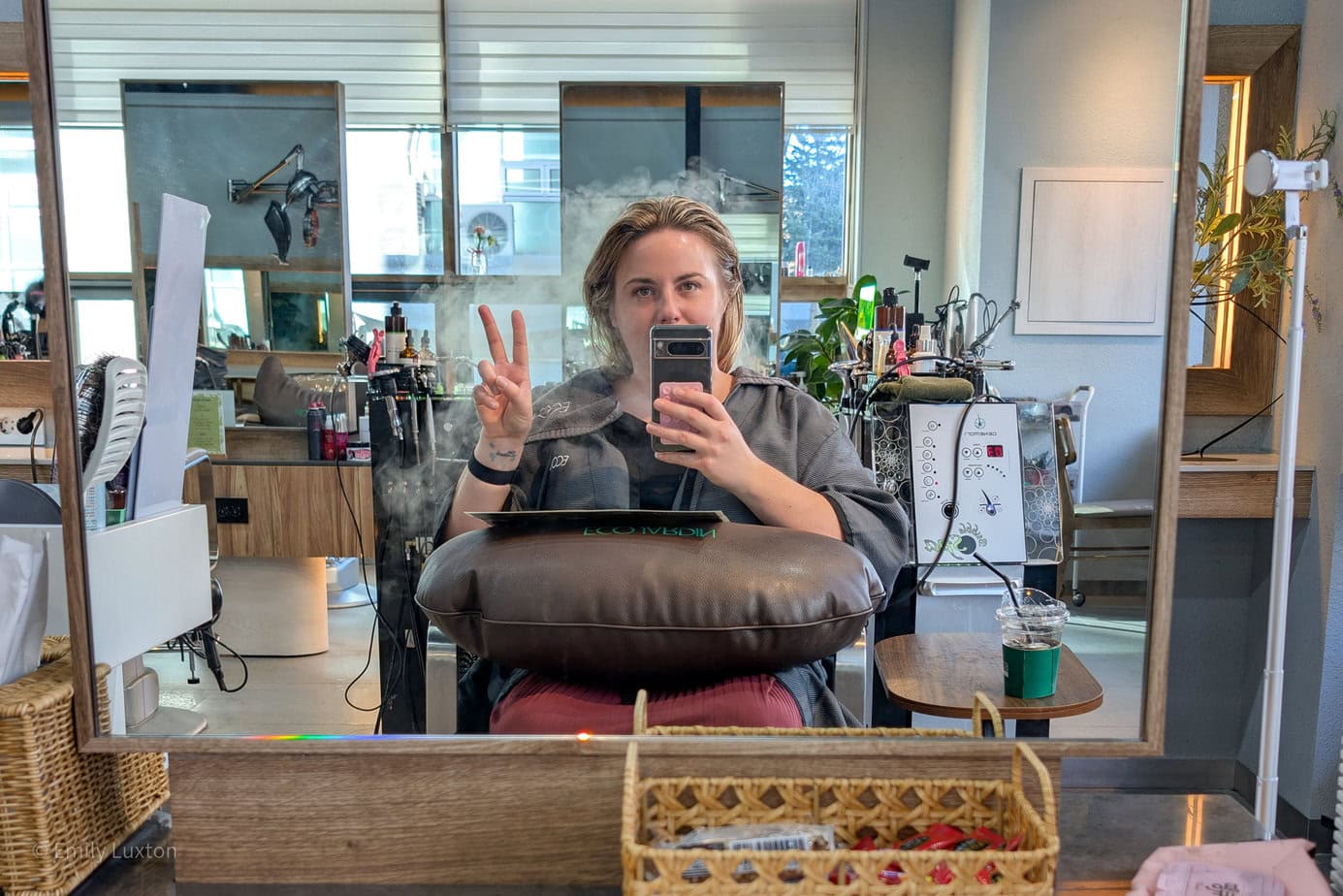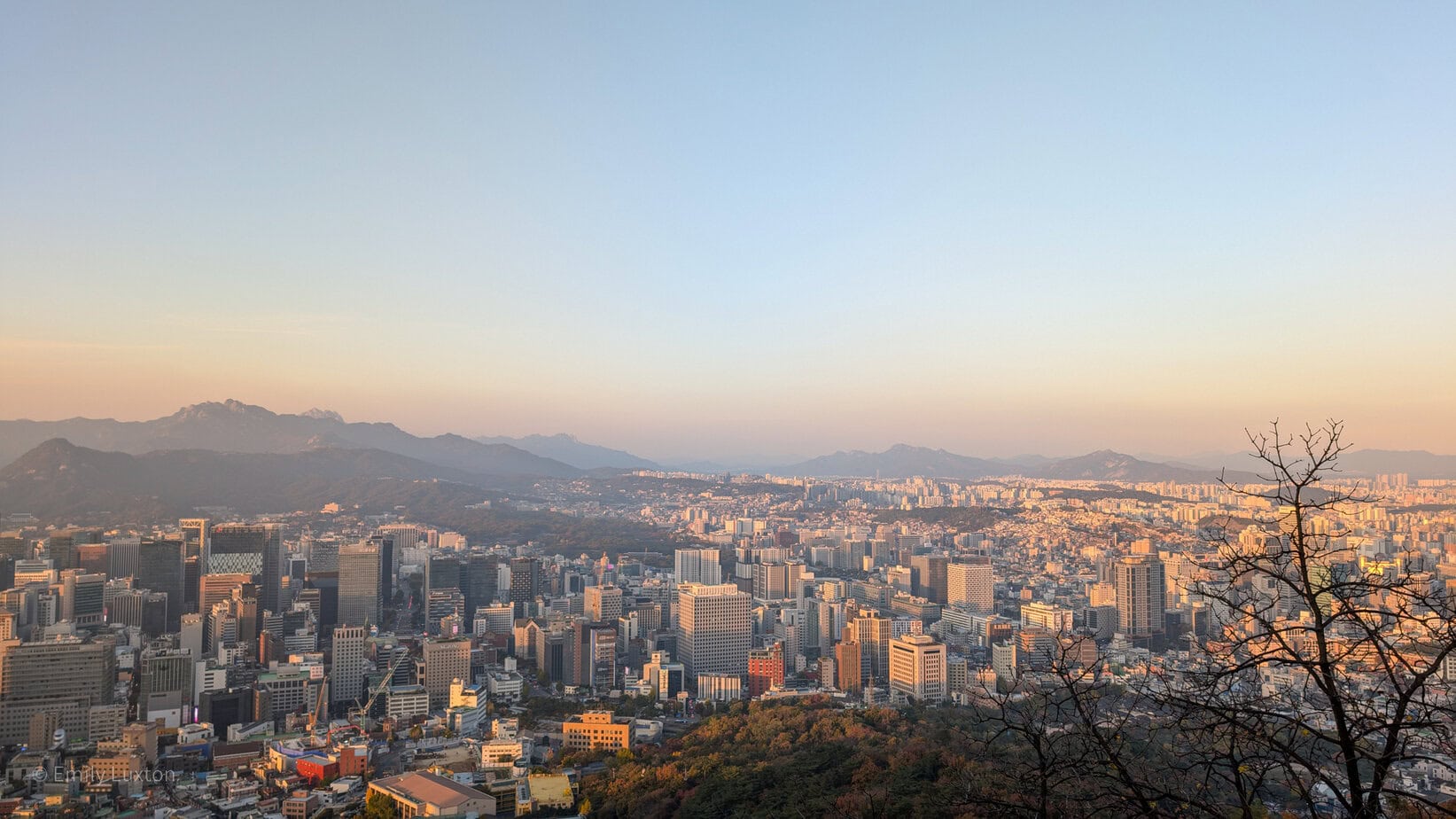Some posts on this site contain affiliate links. If you book or buy something through these links, I earn a small commission (at no extra cost to you). Take a look at my privacy policy for more information.
Feeling like a kid playing truant, I snuck away from the chaos of Samarkand bazaar, leaving my tour group behind. Smells followed me out the gates – fruit, saffron, chilli, bread – enticing me back. But the late afternoon sun, slanting golden through purplish clouds, was too perfect to ignore. And I was on a mission, in search of what I thought might be an incredible viewpoint on the edge of the city.
Twenty minutes later, I was standing on a grassy hill overlooking the city, basking in the warm sunshine, the wind whipping my hair and tugging me towards the wild landscape that spread away from Samarkand.
RELATED POST: What It’s Like Travelling Uzbekistan
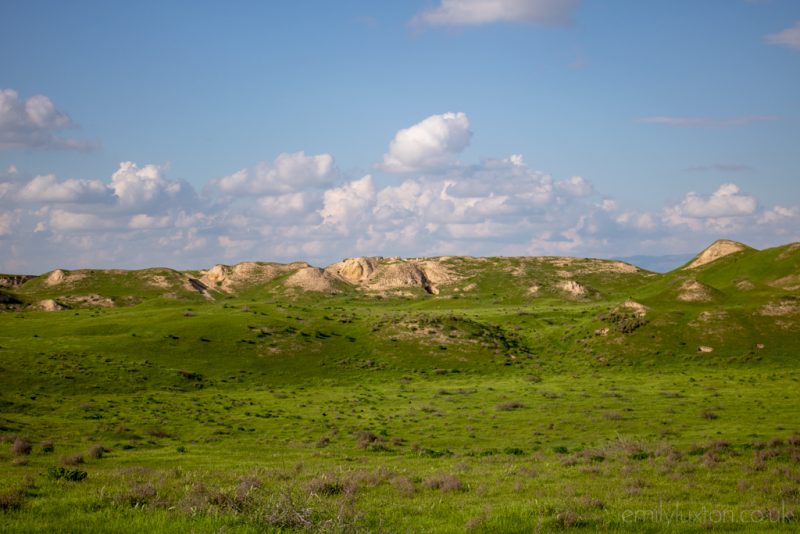
I revelled in the silence. After a busy day touring the glorious monuments of Samarkand – all sandy stone and dazzling blue tiles, ruled by throngs of souvenir vendors – the peace of this sudden green space felt decadent. Poppies nodded brightly in the long grass, butterflies hummed among the dandelions. Springtime in Uzbekistan is a beautiful thing.
The photo op I was hoping for turned out to be a bust. But the opposite direction was a rolling sea of miniature chalky cliffs and grassy mounds, dotted with nodding wildflowers and grazing sheep. A perfect vision of lonely countryside. Uzbekistan’s cities were fascinating, but it’s the wild landscapes that will call me back to that incredible country.
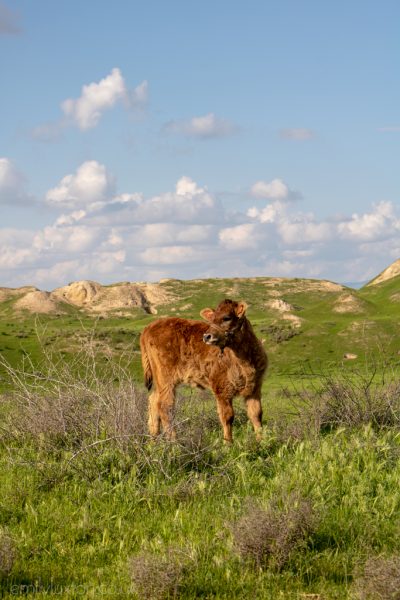
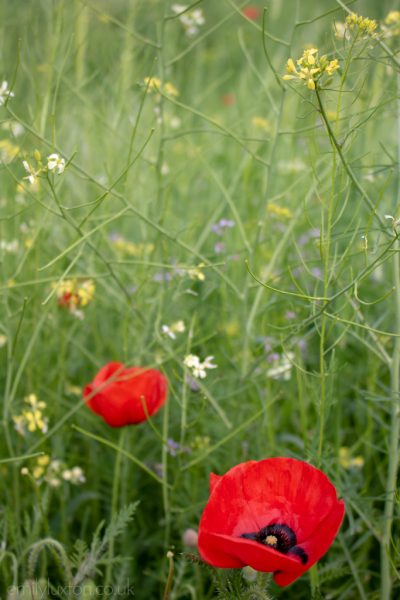
This spot was where Samarkand’s earliest history lay. Out here, the ancient settlement of Afrasiyab had stood before Genghis Khan raised it to the ground in the 13th century. Samarkand was the village built by the survivors, and the rolling chalk mounds, now grazing ground for farm animals, were all that was left of the original town. It looked oddly wild, contrasting weirdly with the sparkling Islamic minarets and neat soviet architecture of the city, whose noise and car horns I could still hear distantly on the breeze. I felt self consciously out of place myself; a lone girl-with-camera wandering off track in the fields.
That was when I met the cowboy.
Alright, not quite a cowboy, but close. A young local on a horse was suddenly riding towards me, with a tiny, rickety-legged foal cantering behind. Out of nowhere, he was riding straight for me – fast enough to cause a flicker of panic, until I saw his face. Beaming with the warm smile I was becoming used to in Uzbekistan, one of the most welcoming countries I’ve visited, he rode over to me and stopped, peering down at me with with curiosity. He’d come to look at the weird blonde girl wandering about on her own in his field.
He barely spoke a word of English, and I had only mastered one of Uzbek – rahmat (thank you) – but that international language of hand gestures, smiles, and nods goes pretty far. We had an almost-conversation while I snapped a few photos of the foal and it’s mother. Then, he started showing off. With a kick, he lifted himself out of the saddle and slid halfway down the horse, both feet still in the stirrup. Leaning as far over to one side as he could, and holding onto the saddle to stay put. Turns out, tricks like this are pretty common in Uzbekistan, where the tribespeople have been riding horses for centuries. It’s a special style of trick riding called jigitovka. So my cowboy wasn’t a cowboy after all; he was a jigit.
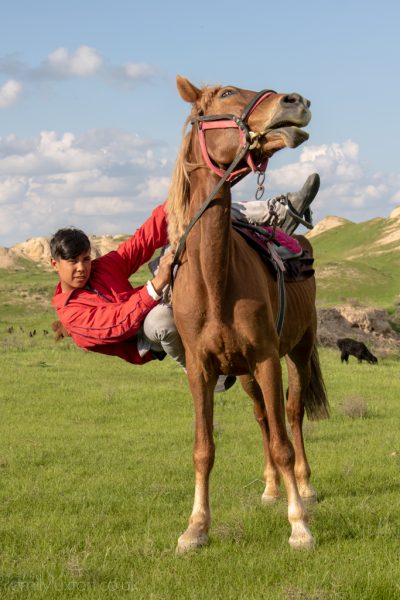
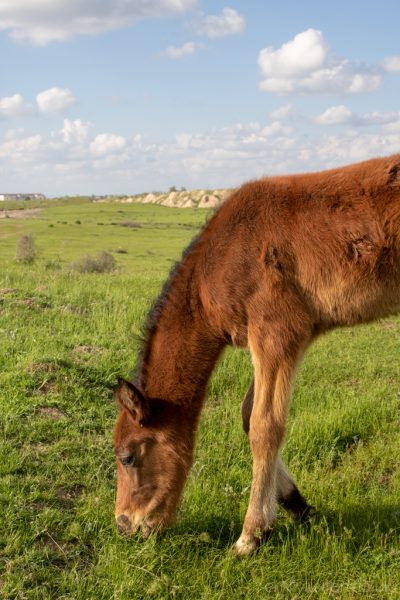
Done posing, my Uzbek cowboy insisted I get on the horse for a photo. Insisted, and wouldn’t take no for an answer. So up I went.
There was a brief, cynical moment where I wondered if he’d use this opportunity to rob me. I was alone in a field, vulnerable and out of my comfort zone on a horse (for what was probably the fifth time in my entire life), and I had about a grand’s worth of tech in my bag.
But it was just that cynical inner voice that always suggests the worst possible outcome. Time and again, travel teaches me that most people are not bad. I hopped gracelessly up into the horse, losing control of my skirt as I did so and making a general fool of myself (as per usual). My new friend snapped a few photos for me while we both laughed at how clearly useless I was. And that was it.
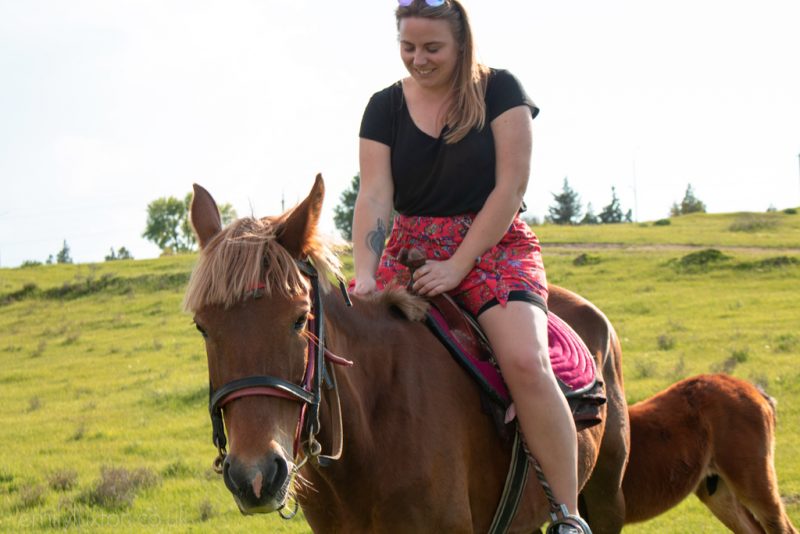
As I clambered messily down, two more locals came wandering over to meet the weird tourist taking photos of their farm animals. A shepherd and his son, with a flock of wirey brown sheep in tow. None of us could communicate in more than laughter and gestures, but somehow we managed a version of a conversation.
The shepherd asked how old I was, if I was single, where I was from. The usual. I’m pretty sure the standard “why is there no man with you” question that follows me around Asia was popped in there somewhere. Jokingly, he proposed – gesturing at his ring finger and pointing back and forth between the two of us – and I laughed as though it was the first time I’d heard that joke, and posed with him for a photo.
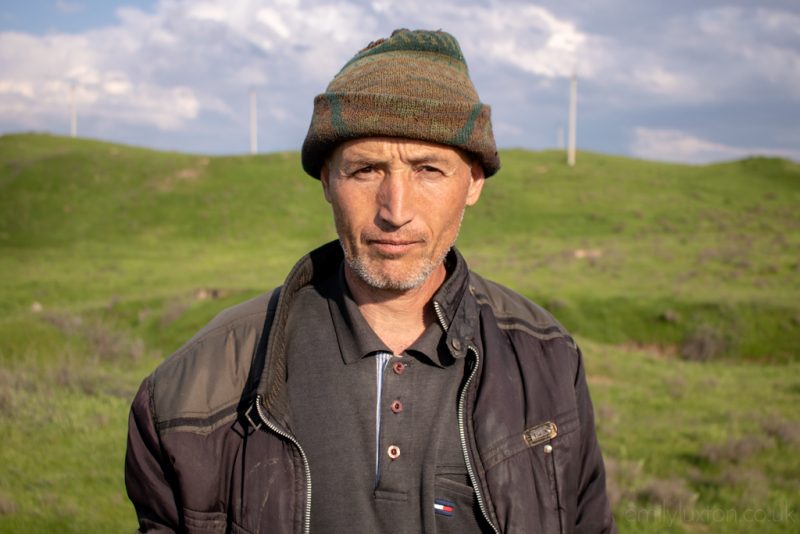
For about thirty minutes, I spoke – without really speaking – to three locals. We took pictures, giggled, gestured. It was a fleeting encounter, but it was also my favourite moment in Uzbekistan. The friendliness of the Uzbek people constantly took me by surprise, and that meeting cemented it. There was something about the Soviet architecture and neatly modern city centres that had made me assume that the country would be cold and distant. But in just a handful of days, I’d discovered that in fact, Uzbekistan is the opposite. It’s warm, and welcoming, and filled with people who wanted to speak to me just for the sake of speaking to me, rather than because they wanted my money (as so often feels the case in more touristy Asian destinations).
Realising that I was about to be late to meet the tour bus, I said goodbye. My new cowboy friend offered me a ride back, which I laughingly refused. Walking back, I regretted saying no, realising how funny it would have been to arrive at the bus stop on the back of a horse.
Untold Stories
This short travel story is part of my new series focusing on the stories that don’t get told. I’m trying to be a bit more creative with my writing, and share the simple, funny, or poignant moments from my travels that don’t normally find a home on my blog.
My trip to Uzbekistan was in partnership with Air Astana. But this mini adventure, and the story of it, was not part of the press trip.
